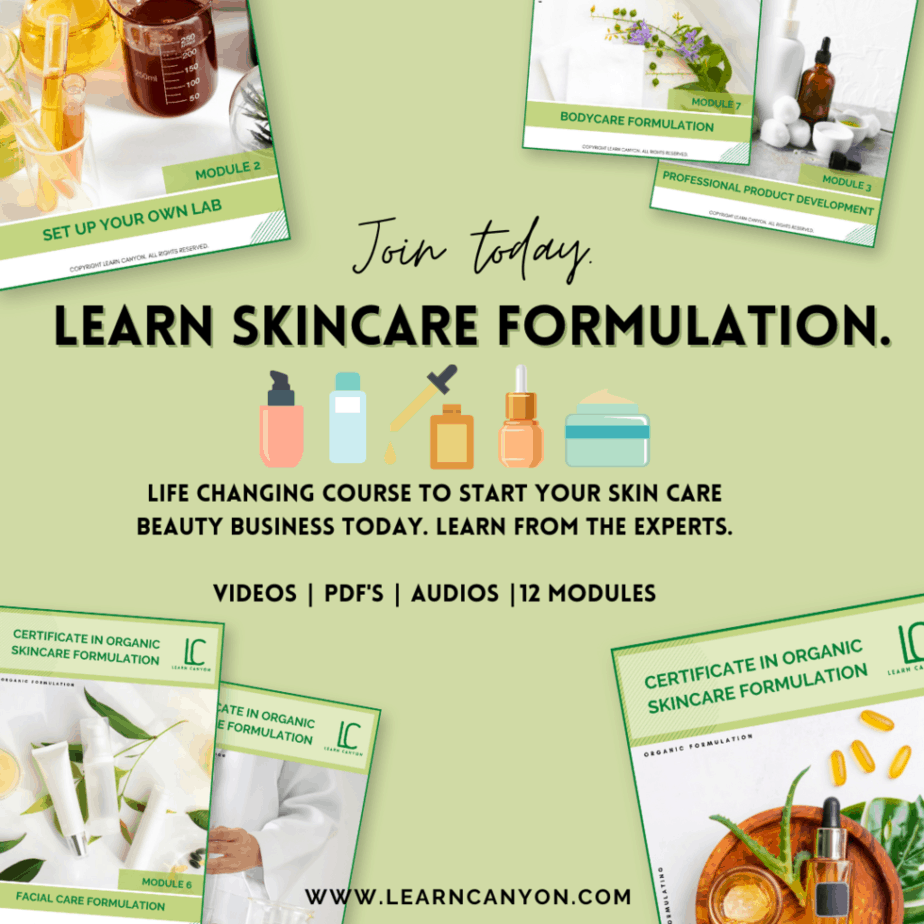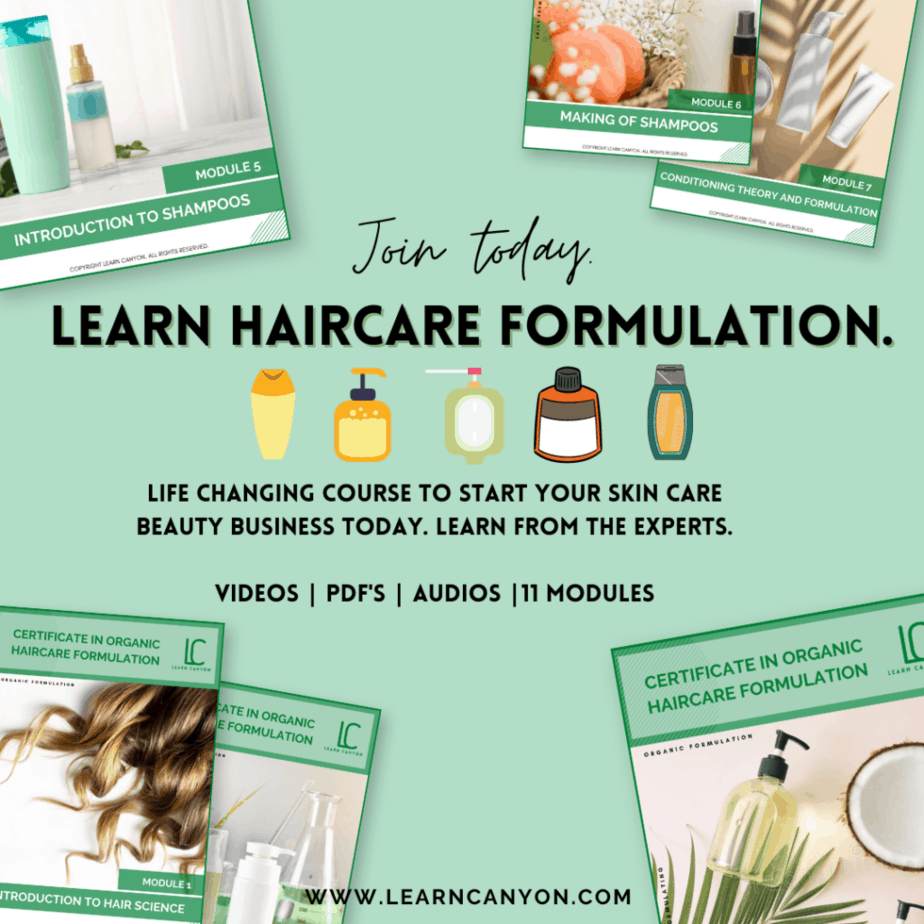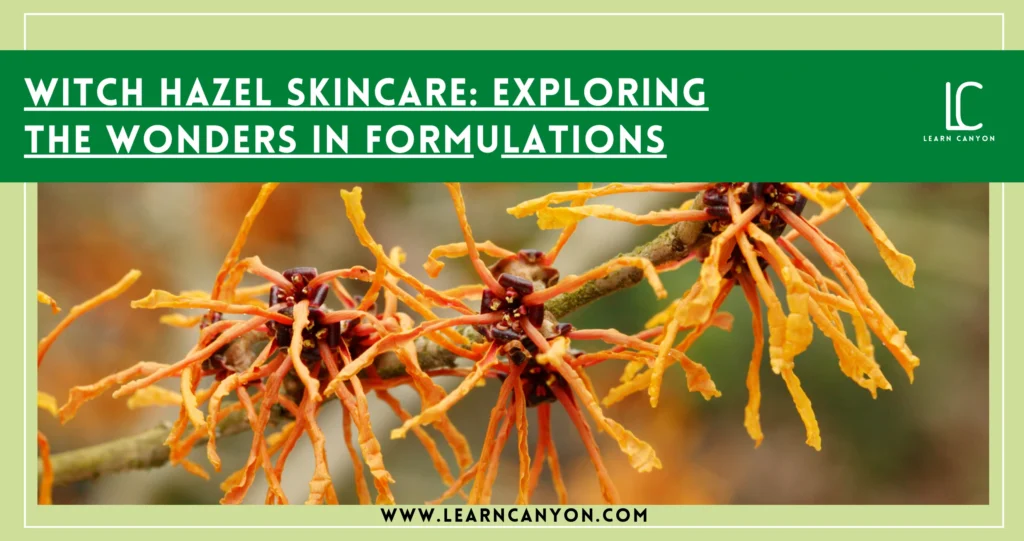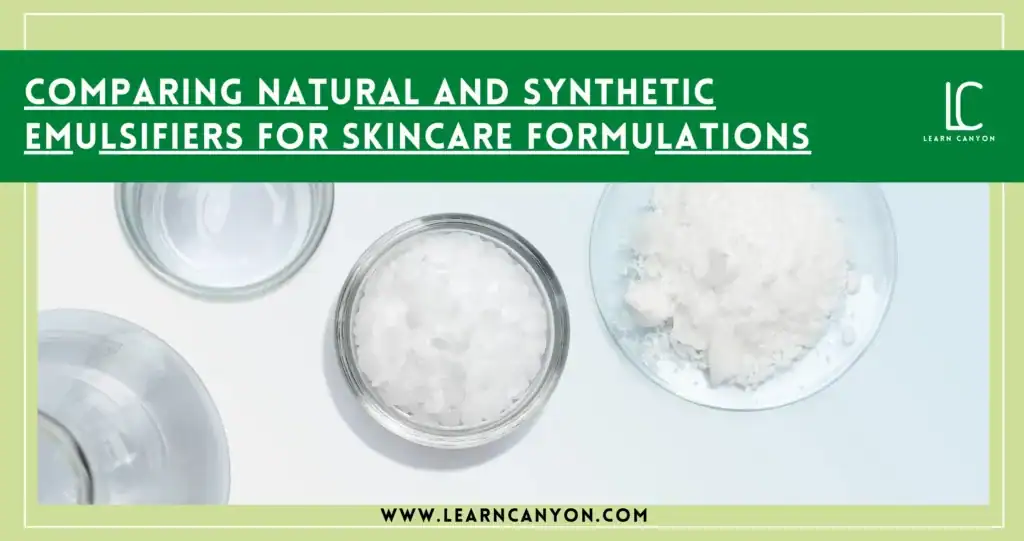Witch Hazel is a botanical ingredient that has been a staple in beauty routines for centuries, prized for its powerful astringent and anti-inflammatory properties. It has long been celebrated for its natural benefits, offering various uses in various skincare formulations.
From toners to cleansers, this versatile ingredient has gained popularity for its effectiveness in reducing acne scars and other skin issues. As a key component in many skincare products, witch hazel continues to captivate beauty enthusiasts and dermatologists alike with its potential to soothe irritation, reduce redness, and minimize the appearance of pores.
The wonders of witch hazel skincare formulations are rooted in their rich history and proven effectiveness. Traditionally used by Native Americans for its healing properties, witch hazel has stood the test of time as a reliable skincare ingredient.
As consumers seek natural and gentle alternatives, the rise of witch hazel in skincare products reflects a growing interest in harnessing the power of botanical extracts for healthy and radiant skin. This article will delve into the science behind witch hazel’s skincare benefits and explore its role in modern beauty formulations.
Witch Hazel Demystified
What Is Witch Hazel?
Hamamelis virginiana, also known as witch hazel, is a botanical flowering plant that has a rich history in traditional medicine and other disciplines.
According to Appalachian Mountain lore, the herb has been used to treat a variety of diseases, especially painful muscles and burns.
Witch hazel, which may grow up to 15 feet tall, is categorised as both a large shrub and a small tree.
It is a deciduous shrub with strappy yellow or orange blooms that grows in the eastern United States and Canada. There are also two Asian and Japanese variations.
Indigenous people used its bark and leaves for many therapeutic purposes including; Skin Irritation, Bruises, Arthritis, Hemorrhoids, insect bites and respiratory conditions.
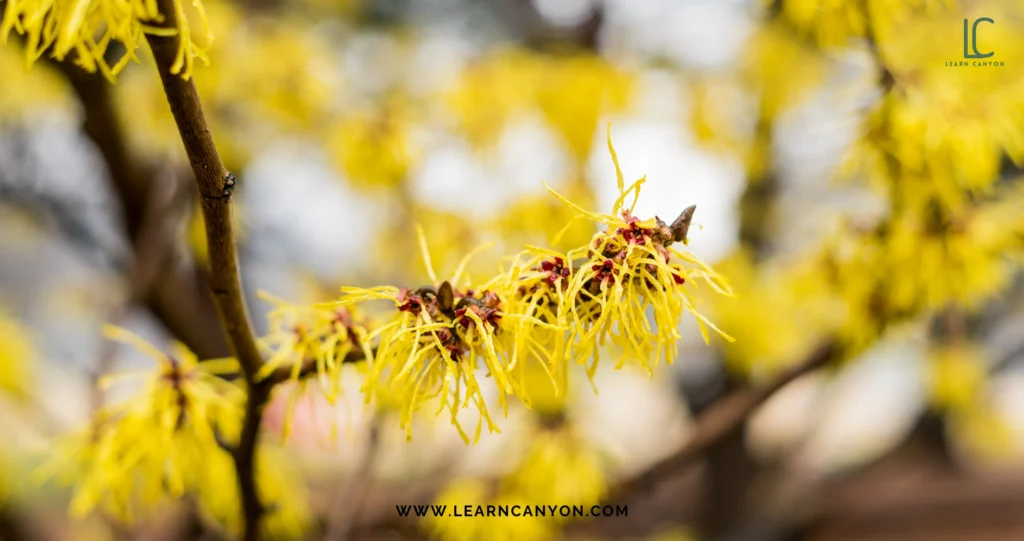
Extraction and Preparation
Traditionally, witch hazel extract was prepared by boiling the stems and extracting the liquid. Commercial manufacture of witch hazel extract began in the early to mid-nineteenth century. In the distillery, tree portions are distilled in stainless steel vats and steamed for approximately 36 hours to extract the liquid.
The witch hazel extract liquid is an astringent herb that is often extracted in an alcohol-water blend to maximise tannin extraction.
You might see a product named witch hazel water (Hamamelis water, distilled witch hazel extract). The solution is distilled from dried witch hazel leaves, bark, and partially dormant twigs.
The extraction process of Witch Hazel is as follows;
- Maceration
- Filtration
- Bottling
Mostly the hydrosol distillate of witch hazel is used in the preparation of skincare products. It has a thin, watery consistency that makes it simple to add to cosmetic products without affecting their texture or consistency. It can also be mixed with other natural components to make many skincare products, including face mists, serums, and moisturisers.
This particular distillate water is a byproduct of the steam distillation process, which is utilised to extract essential oils from plants. It is the condensate water that remains behind. During this process, the steam absorbs some of the plant’s fragrant and therapeutic elements. The condensation created when the steam returns to a liquid condition is then collected, yielding water rich in active compounds and with a light smell of witch hazel.
And that liquid extract helps alleviate minor skin issues including acne, bug bites, and haemorrhoids. It also reduces scalp redness and helps prevent skin damage caused by air pollution.
The Science Behind Witch Hazel Benefits
To understand the science behind witch hazel benefits on the skin, you need to be aware of its chemical properties of Witch hazel. Its major chemical elements, which vary depending on the region and components employed, are mostly tannins, notably gallotannins, and, to a lesser degree, flavonoids such as procyanidins, catechins, and flavenols.
Witch Hazel is a natural astringent with anti-inflammatory and antibacterial properties. Let’s explore its benefits on the skin based on its properties.
- Astringent Properties
Witch Hazel contains tannins, and they contain hamamelitannin and saponins. The properties of these constituents are mostly astringent. These properties reduce the oil on the skin which helps in decreasing follicle size.
Its astringent properties also gently compress blood vessels, thereby lowering redness and irritation. It’s an excellent choice, particularly for people with sensitive or acne-prone skin.
About Hamamelitannin:
Many cosmetic formulators fail to study this major component of witch hazel which is found among tannins, and because of the inadequate research sometimes skincare formulators fail to develop the right witch hazel-based cosmetics. So, in an invitro study, this most abundant Hamamelitannin were studied in-depth for having antibacterial, antioxidant and vasoprotective properties which can counteract skin conditions such as inflammation during C.acnes infection and this component of witch hazel alone is the powerhouse of having the ability to fight all skin diseases more than other forms of tannins.
- Anti-inflammatory Properties
Witch hazel includes plant components with anti-inflammatory effects, such as tannins and gallic acid. Although research on the anti-inflammatory properties of witch hazel is scarce, one study on 40 persons discovered that a lotion containing 10% distilled witch hazel has anti-inflammatory impacts on reddish skin caused by ultraviolet light exposure (erythema).
Their polyphenol components have anti-inflammatory characteristics, and witch hazel serves a purpose in treating inflammatory skin disorders, particularly skin irritations like acne, eczema, psoriasis and heals varicose veins.
Its anti-inflammatory properties also help in calming irritated skin and alleviate itching.
Additionally, when trying Witch Hazel for the skin, remember that its natural anti-inflammatory characteristics help minimise swelling and puffiness surrounding the eyes. It’s your safeguard for a brighter, more alert appearance.
- Anti-Oxidant Properties
Witch hazel also contains a good amount of anti-oxidant properties. It contains a compound called gallate esters and is considered to be polyphenolic. This compound acts as a great anti-oxidant that battles free radicals on your skin, thereby reducing cellular damage.
These antioxidants also minimise the formation of wrinkles and fine lines, providing an anti-ageing effect on the skin.
- Anti-Bacterial Properties
Witch hazel has a substantial phenolic content, which includes substances that can impede the development and virulence (extent) of dangerous bacteria.
In certain vitro studies with the plant, tannin-rich witch hazel extract was experimented with and studied against various types of pathogenic bacteria accountable for many skin diseases and human ailments, particularly the bacterial families that trigger strep and staph diseases. It was reported that witch hazel extract was particularly successful at limiting many types of bacterial pathogenesis, which is the ability of germs to grow and manufacture harmful toxins for release into the host’s ecosystem.
Therefore, witch hazel has a great role in skin concerns especially in combating acne-causing bacteria. It can easily fight acne-causing bacteria and heal the acne.
- Anti-fungal Properties
Hamamelis inhibits the pathogenic multiplication of yeasts that are typically found on healthy skin. This justifies how effective it is in the treatment of seborrhoeic dermatitis.
- Witch Hazel for Skin PH
It helps maintain your skin’s natural pH levels, preventing it from becoming too acidic or alkaline. This balanced pH is essential for healthy and resilient skin.
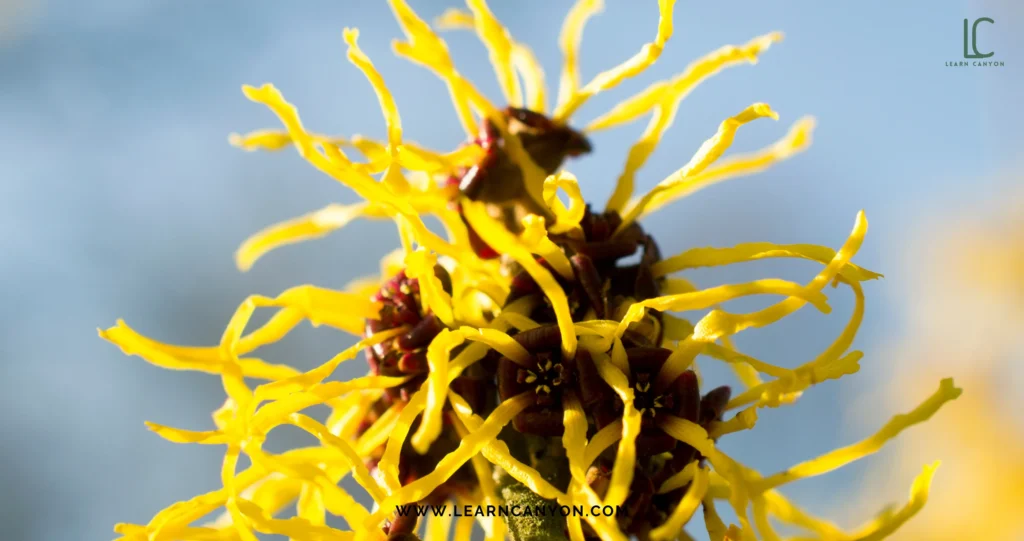
Witch Hazel On The Skin Barrier
Skin barrier health is crucial for all skin types in both preventative and restorative skin care. One investigation was carried out on the efficacy of witch hazel (Hamamelis virginiana) extracts as natural and efficacious components for treating chronically irritated skin and increasing skin barrier function.
In a unique ex vivo chronic inflammation paradigm, the witch hazel (WH) formula showed a strong anti-inflammatory effect by lowering many important pro-inflammatory cytokines such as IL-6 and others of the skin barrier. The WH formula boosted the expression of essential barrier function indicators loricrin and transglutaminases-1, in comparison to the inflamed condition. The findings suggest that a novel formula with an extract of witch hazel acts as a potent anti-inflammatory agent with skin barrier function improvement and an effective, well-tolerated treatment for improving overall skin health.
Witch Hazel In Skincare Formulation
Witch Hazel has been one of the most important ingredients used in skincare formulations. In the realm of cosmetics, Hamamelis is applied in the form of astringent, vitalizing creams, facial lotions and sometimes as hair tonics.
The current invention and study, pertain to the cosmetic application of Hamamelis virginiana extract to enhance the development of extracellular matrix fibres in the skin, mucous membranes, and/or scalp, with a preference for elastic fibres. and/or collagen fibres.
In cosmetic formulation, witch hazel is used as Witch Hazel Distillate/Hydrosol and Witch Hazel Extract. Both are the most often utilised forms of witch hazel.
The functions, applications, and benefits of both kinds extend from topical skin use as a toner, astringent, anti-inflammatory, and anti-itch therapy to being a vital component in skincare formulations.
In witch hazel, the resulting PH is from 3.0-5.0 and based on its PH level the concentration level will be decided in cosmetic formulations. It is appropriate to incorporate the distillate or extract into the water phase formula.
Extract or distillate is commonly used for skin lotions, shampoos, shower gels, cosmetic liquid washes (with 5-20%), skin toners, and face masks (with 15-50%). But, in the typical use of cosmetics, the level ranges from 1 to 10% or greater. For exterior use only.
Preferably, the Hamamelis virginiana extract of the current research and invention is present in the cosmetic or dermatological mixture at a concentration of between 1.10 -4 and 10% by weight, and more preferably between 1.10 -4 and 5%.
Specifically, between 1.10 “3 and 3% by weight relative to the total weight of the component.
When it comes to storage it must be protected from direct light and humidity at a temperature of 50°-77°F (10°-25°C). The Shelf life of extracts varies from the hydrosol or distillate; hypothetically 12 months from the date of its preparation.
Based on the concentration levels of witch hazel distillate, its applications include serums, lotions, creams, toners, hair and body shampoos, soaps, gels, sun and after-sun care, and sunscreens.
Witch hazel hydrosol is truly far gentler than any essential oil. It helps soothe acne-prone skin and can also be used in clay masks. It has the effect of making the skin radiant. But you might not find pure witch hazel distillate or its extracts for your skincare formulation easily because of additives in them.
Make sure that you get pure hydrosol, as many witch hazel waters are offered as hydro-alcoholic extracts with a high ethanol content. Because pure concentrations of witch hazel are the best ingredient to develop any effective skincare product.
How To Use Witch Hazel in Skincare Routines
Many consumers fail to understand how to use witch hazel in their daily skincare routine, thereby creating skincare accidents and causing adverse reactions on the skin. Ways to incorporate witch hazel in a skincare routine are as follows;
- For Sunburns
You should always use and reapply SPF, but if you do develop sunburn, the tannins (a natural ingredient that helps minimise inflammation) in witch hazel will help calm and cool it down.
- After Waxing
If you wax at home, especially on the areas around your face, you should apply witch hazel gel thereafter to help prevent any unwanted spots.
- Using Witch Hazel Toner
Witch hazel is a natural astringent, therefore it is commonly used to eliminate excess sebum and temporarily reduce the visibility of pores and this makes the witch hazel toner ideal for people who have oily or acne-prone skin.
Cosmetologists recommend the application of this post-cleansing, before any topical medications or serums, moisturisers, SPF, and makeup. If you find that using a witch hazel toner every day dries you out, try it once every other or a few days instead.
However, not all witch hazel toners are made identical: Some iterations contain alcohol, which is the source of much of the witch hazel dispute in the skincare realm.
- Witch Hazel as Face Wash
Witch hazel’s benefits extend beyond balancing oil production. As it possesses anti-inflammatory and antioxidant qualities. It can be soothing for the skin. So, if you still want to use witch hazel but avoid toners, a face wash may be an improved choice.
- Witch Hazel For Acne & Oiliness
Using witch hazel for acne leads to removing oil or the excess sebum from your pimple and skin and possibly halts breakouts. The tannins in witch hazel have antibacterial qualities, which means they can limit bacteria growth on the skin, resulting in fewer acne outbreaks.
They momentarily soothe the look of red or blotchy skin by calming the area and causing your blood vessels to tighten, making your pores seem smaller and less red.
Witch hazel aids in eliminating excess oil, making it an excellent choice for oily skin types.
- For Spot Treatment
Do you have a spot brewing on your skin? Witch hazel can help stop a pimple in its path by restricting blood vessels, which reduces redness, irritation, and swelling. Just dab it on that blemish to see the spot reduction.
Note: Witch Hazel is typically suggested for all skin types, but those with oily, mixed, or acne-prone skin would benefit immensely from adding an alcohol-free witch hazel toner to their regimen.
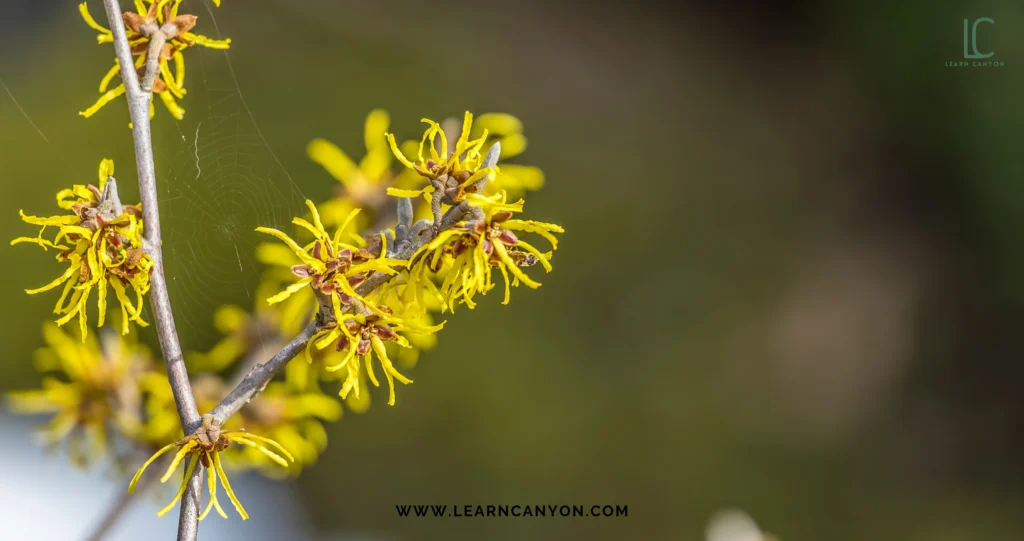
Safety Assessment Of Witch Hazel In Cosmetics
The Food and Drug Administration (FDA) approves the application of Witch Hazel Concentrate (from bark, leaves, and twigs) as an astringent in over-the-counter (OTC) skin protectants and anorectal drugs.
When utilised as the active component in an over-the-counter medication, the ingredient is known as witch hazel. The Cosmetic Ingredient Review (CIR) has deferred examination of Witch Hazel since the FDA has assessed its safety.
Conclusion
From the above points, we can see how viable witch hazel is for our skin. Formulators need to dive deep into the mechanism of witch hazel on the skin barrier before they can work with witch hazel to create a formula.
Because witch hazel’s components have different roles for various skin concerns, knowing the right formula, concentration, and synergies with other components can help formulators establish an effective base for producing witch hazel-based cosmetics that should work wonders instead of damaging the skin barrier.
Consumers and formulators must remember that although witch hazel is a “natural” component, it does not mean it is suitable for everyone.
Furthermore, some OTC solutions may contain additional substances that irritate your skin, such as alcohol.
Therefore, Cosmetic scientists should be aware of the difference between pure witch hazel distillate or hydrosol and alcohol-containing (also adulterated) witch hazel distillate.
That’s why we at Learn Canyon are mindful enough to extract organic resources from Mother Nature and are completely against adulterated resources. If anyone wants to study organic skincare formulations to prepare their favourite witch hazel-based cosmetics then look no further.
We provide the most advanced organic skincare formulation courses that will scale up your formulation skills in producing the best organic skincare products.
We are just one call away. Happy Formulating!
FAQS
Can Witch Hazel Completely Eliminate Breakouts?
While witch hazel can help reduce breakouts by washing and toning the skin, its impact may vary depending on the skin type and condition.


